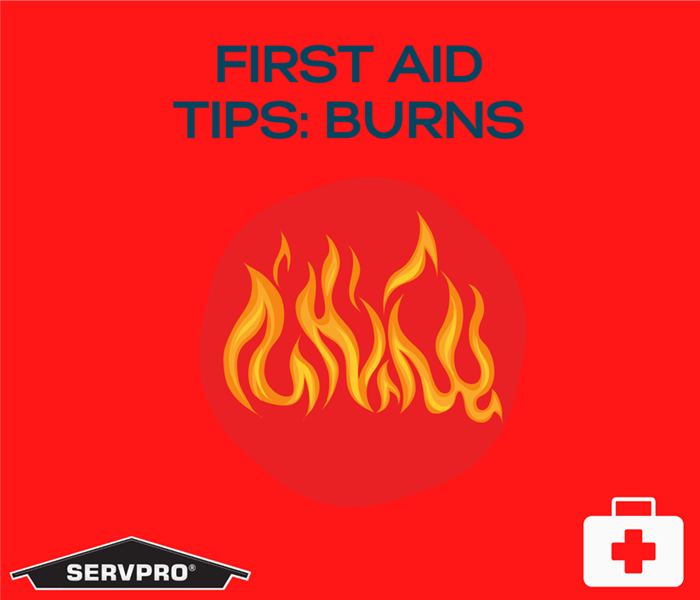Basic First Aid Tips for Burns
8/18/2021 (Permalink)
When you are cooking, baking, or doing work around your home, there is always a chance you can get a burn from hot stoves or electrical appliances. It is important to know what to do in case you or a family member gets a burn to stay safe and provide proper first aid to heal.
A burn is damage to the skin or tissue resulting from scalding, contact with flames, chemicals, or electricity, or smoke inhalation.
For major burns, call 911 or seek immediate medical care. Major burns can be discerned from minor burns if you notice deep lacerations, or if the burn causes the skin to be dry and leathery. Major burns also appear charred or have patches of white, brown, or black, or are larger than 3 inches and cover the hands, feet, or a major joint.
Some burns are able to be treated with first aid at home, and these tips can help you properly treat a burn wound. Minor burns that may not require immediate medical care may have redness similar to a sunburn, pain, blisters, and comprise an area of less than 3 inches in diameter.
Treating Major Burns (Until Help Arrives)
Major burns are serious and it is important to call for medical help right away. These steps can be taken to keep the burn safe until emergency services arrives:
Protect the Burned Person from Further Harm
Make sure that the person you are helping is not still in contact with the source of the burn. For example, if a person burns themself on a pan in the kitchen, get them away from the stove and turn off the gas or electricity. For electrical burns, make sure that the power is off before helping the burned person.
Cover the Area of the Burn
To cover the area of a burn safely, use a cool cotton cloth or bandage. Apply clean cold water to the bandage or cloth and wring out before applying to the burn. Do not immerse severe burns in cold water, as this could cause more harm. Wait for emergency services to assist the person further.
Watch for Signs of Shock
While waiting for emergency services to arrive, be sure to keep an eye on the person to assure they are okay. Elevate the burn wound above heart level if possible.
Burns are unexpected and painful, and it is important to ensure that they do not go into shock. Symptoms of shock include fainting, shallow breathing, and pale skin color.
First Aid for Minor Burns
Minor burns do not usually require extensive treatment, and first aid can be done at home. These steps can be taken to treat minor burns:
Cool Water
Run the burn wound under cool running water briefly or until the pain slightly eases. Be sure not to use too cold or icy water, as this could cause hypothermia. A cool compress or moist cloth can also be applied to relieve pain.
Bandage the Burn
Cover the burn with sterile gauze. Wrap the gauze loosely to avoid putting pressure on the burned skin. Apply antibiotic ointment. Wait to bandage once the burn is cooled, lotion or aloe vera can also be applied to provide relief.
Burns of all kinds should be dealt with with the appropriate medical treatment. As with all injuries, contacting a medical professional is always the safest way to treat any burns or other injuries. For more advice like this, visit our blog. SERVPRO of South Mecklenburg County is experienced in handling any of your fire damage needs in your Charlotte, NC home. Give us a call at (704) 840-6112, day or night.
Want to know more about us? Please check out our other pages:
LinkedIn Facebook Instagram Twitter Angie's List BBB Youtube Pinterest





 24/7 Emergency Service
24/7 Emergency Service
